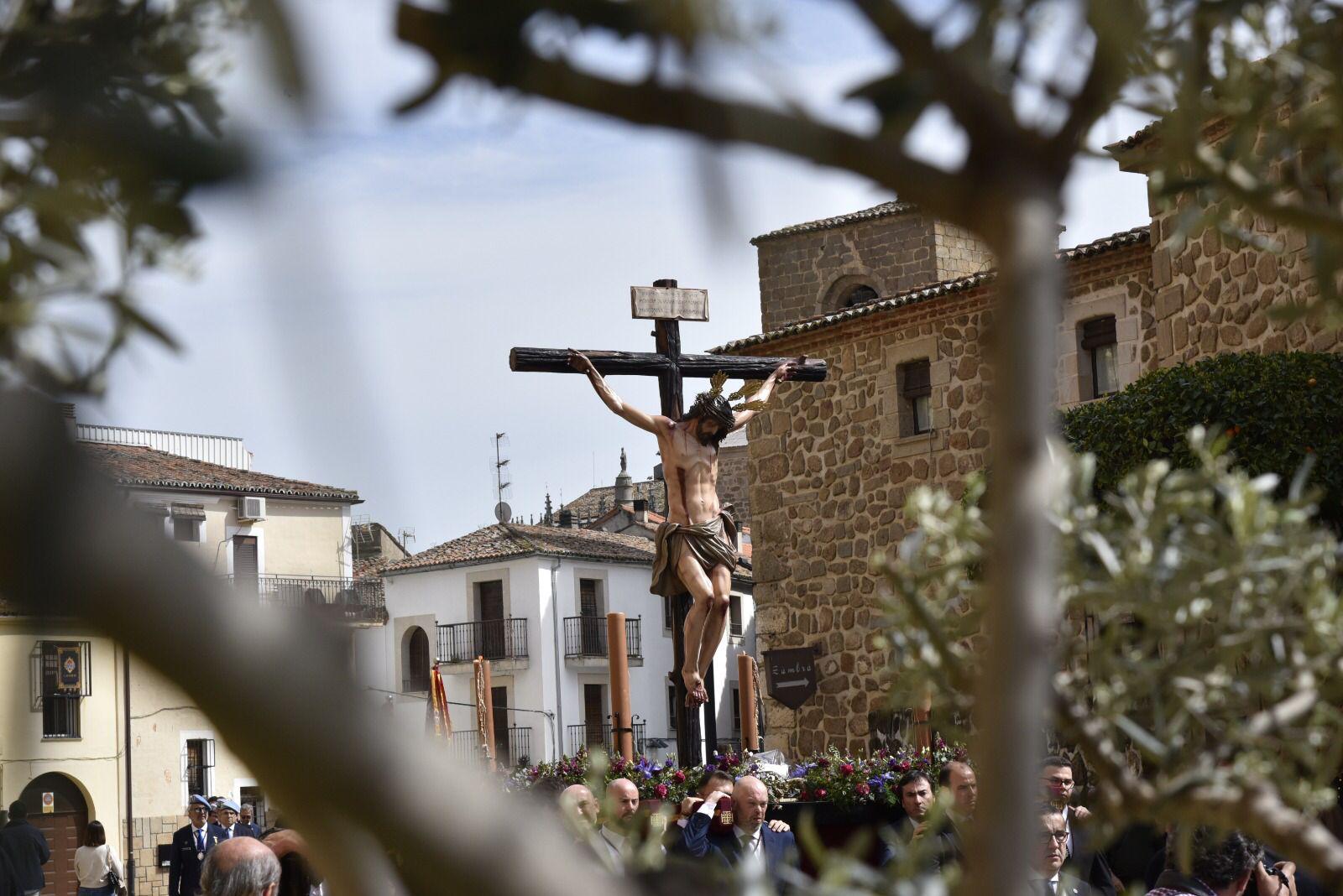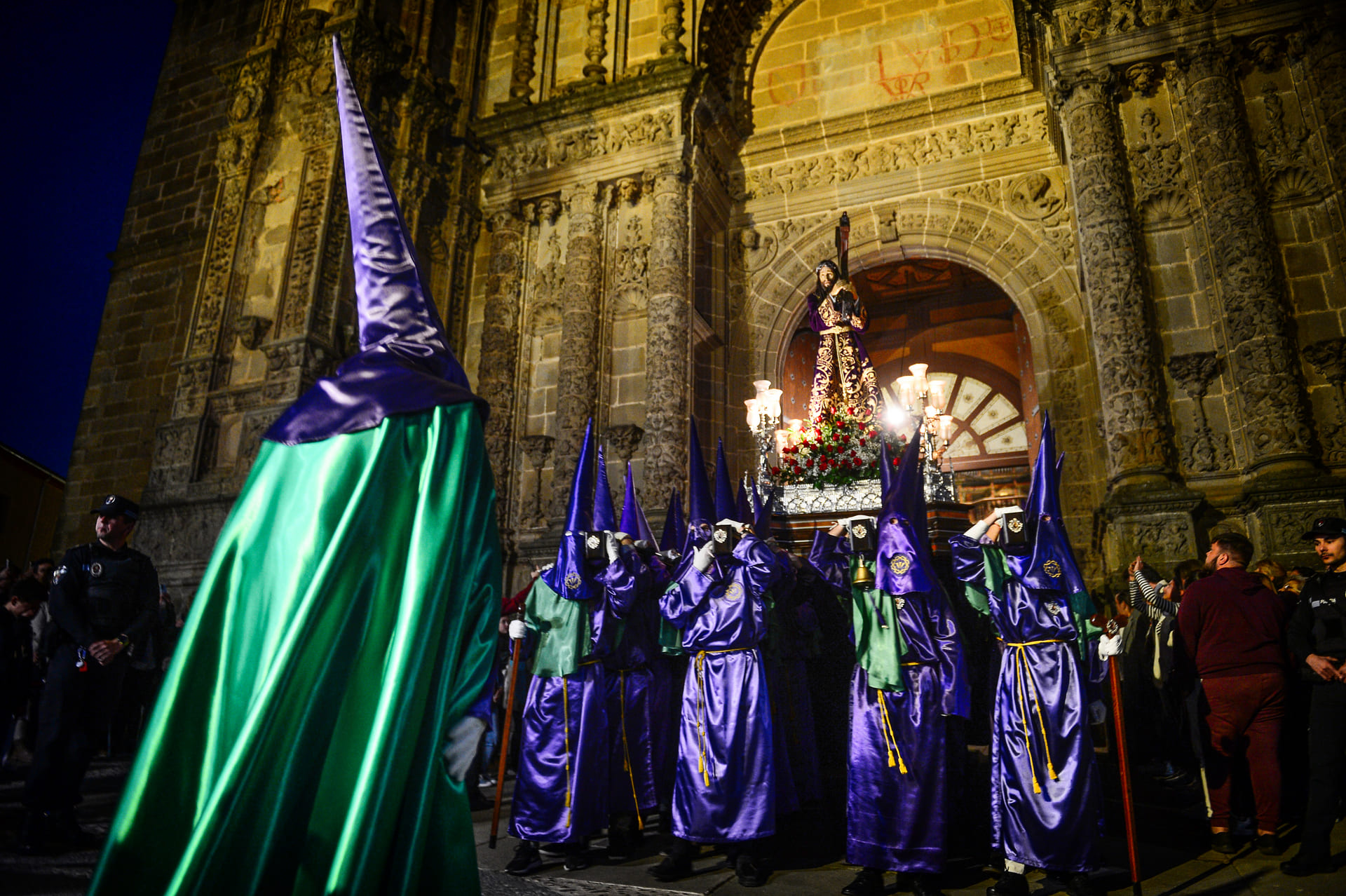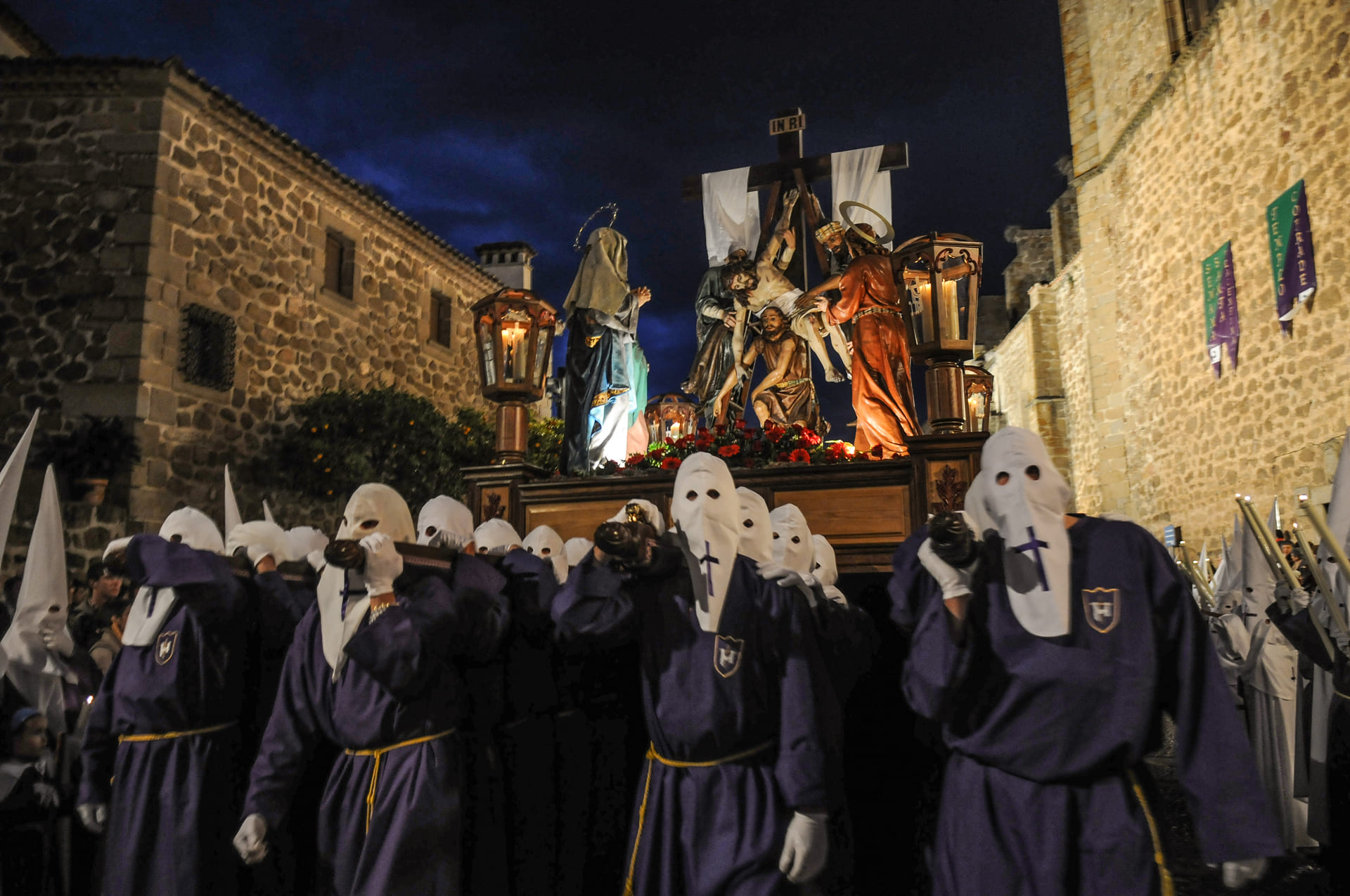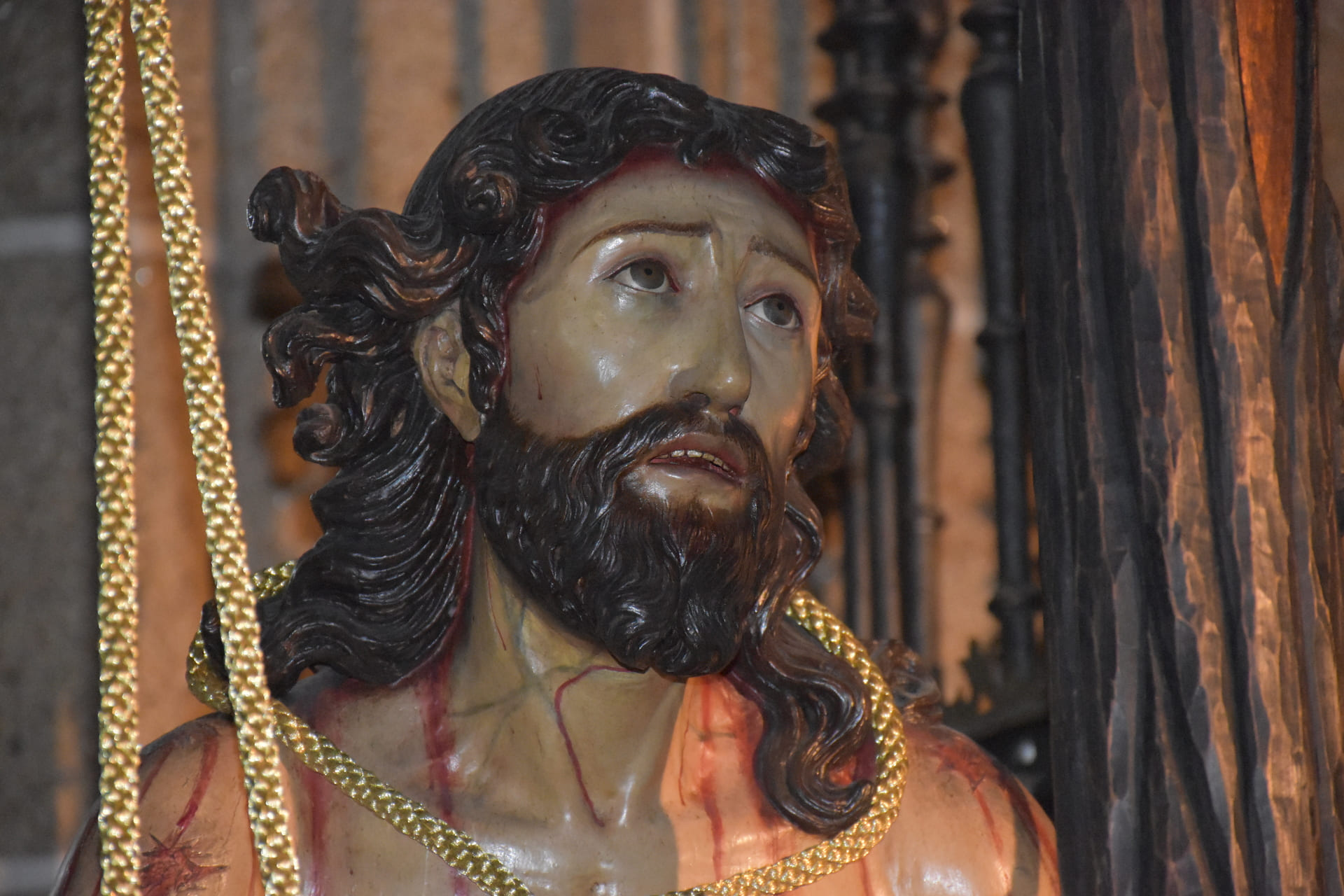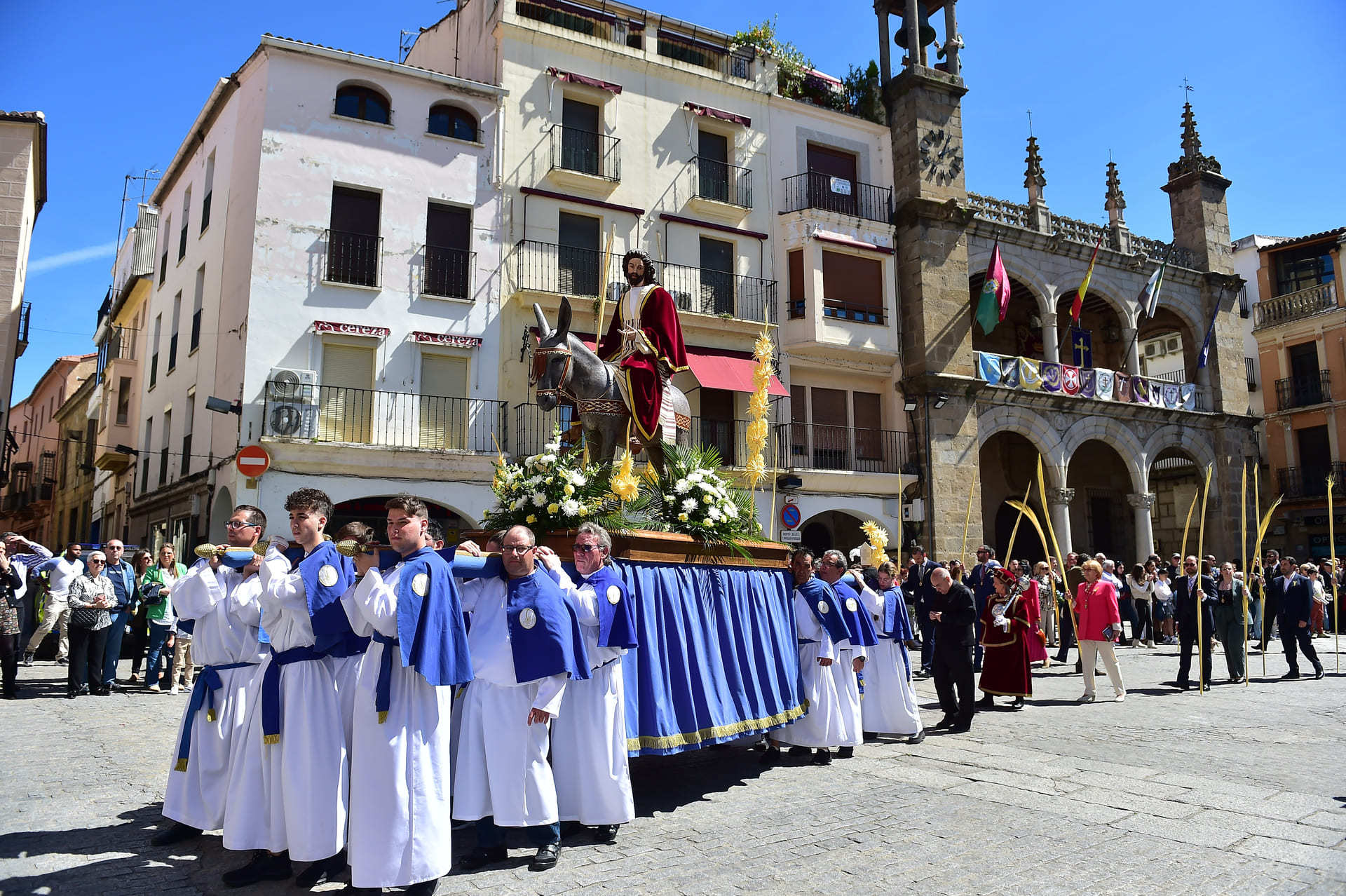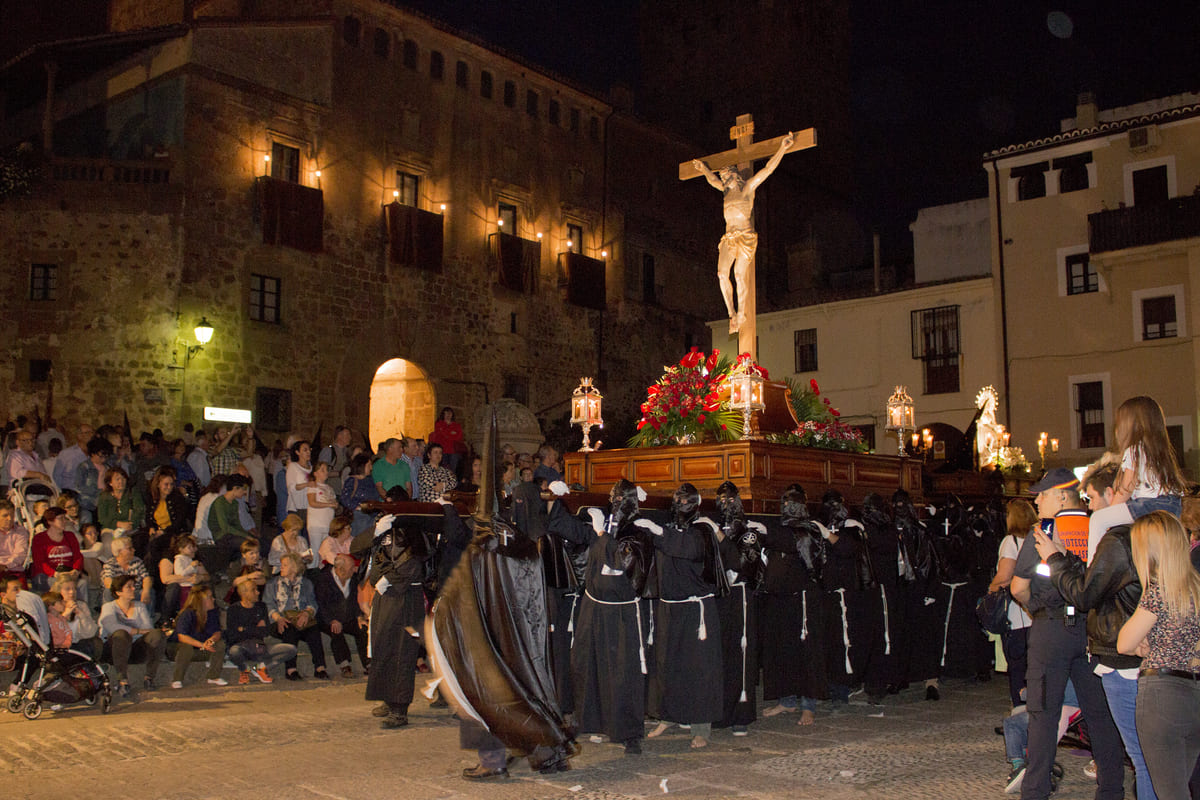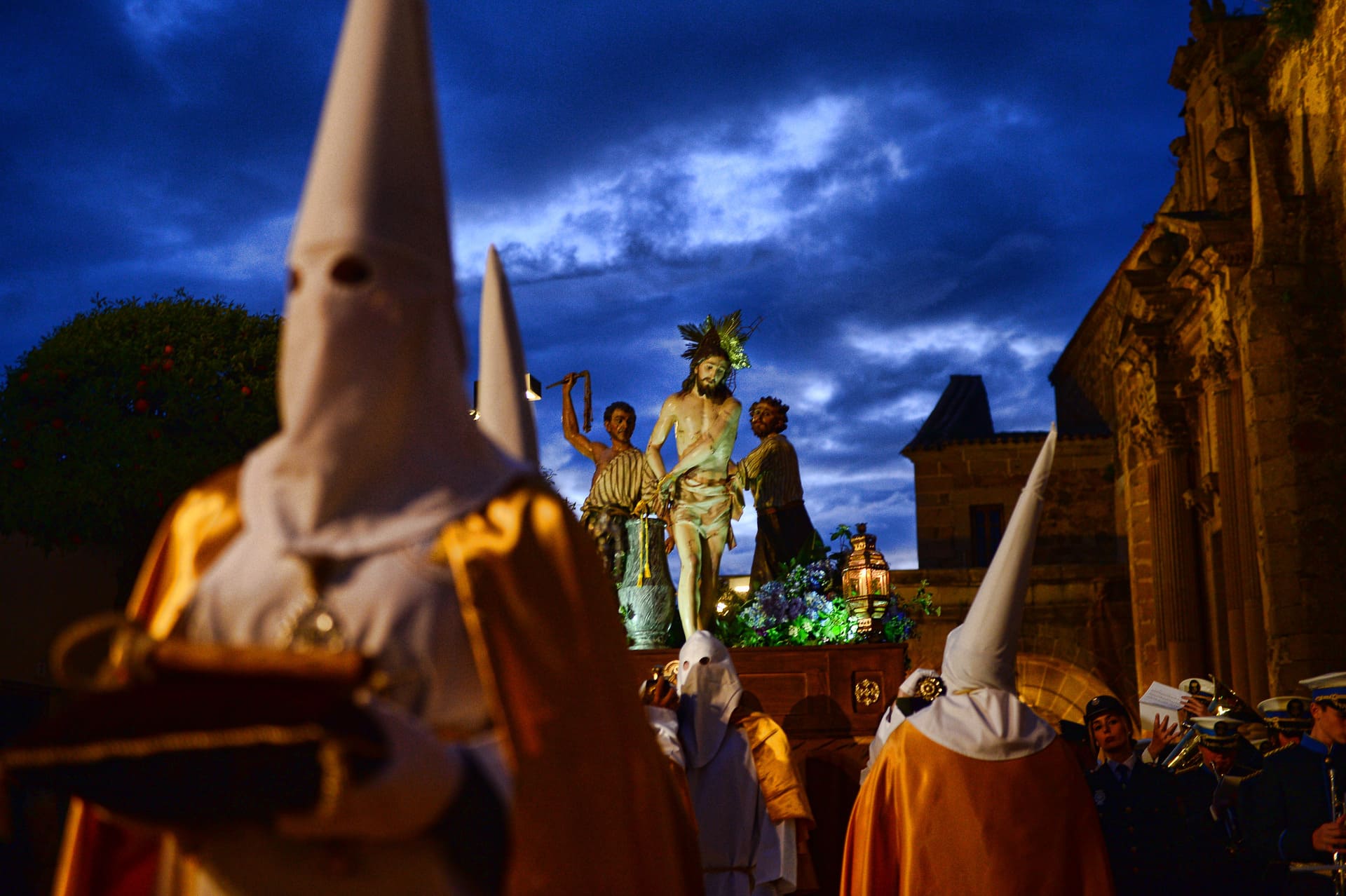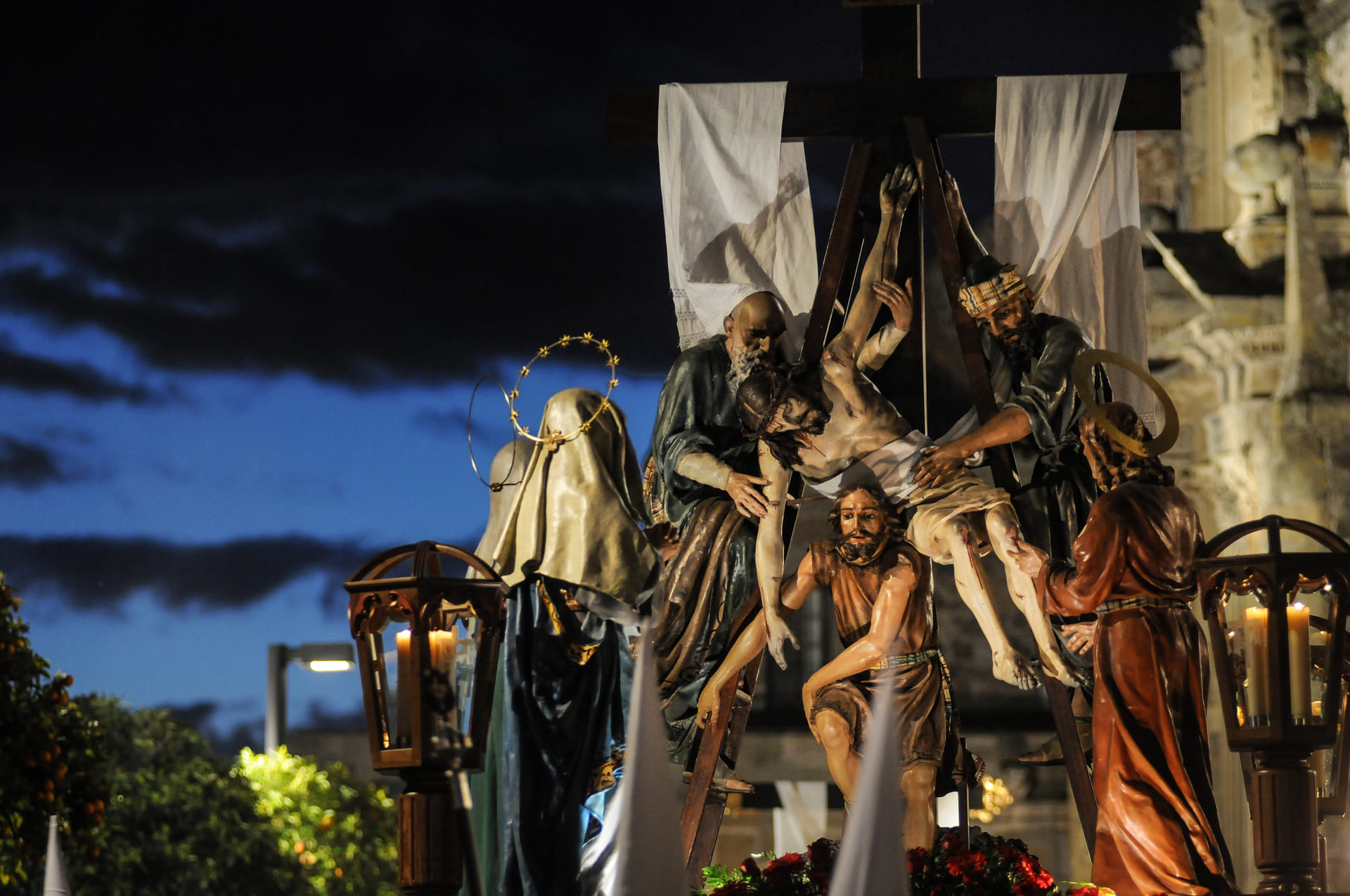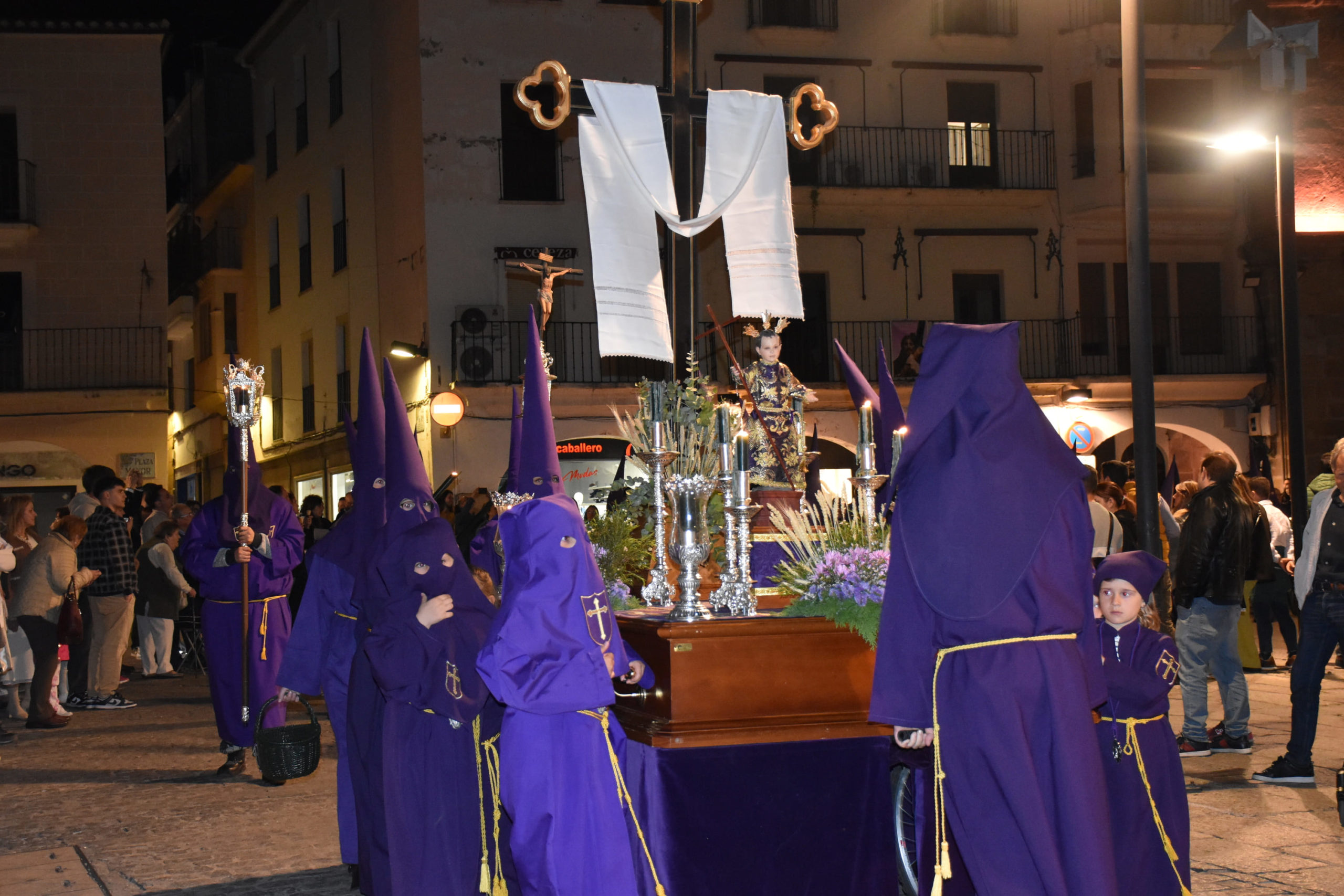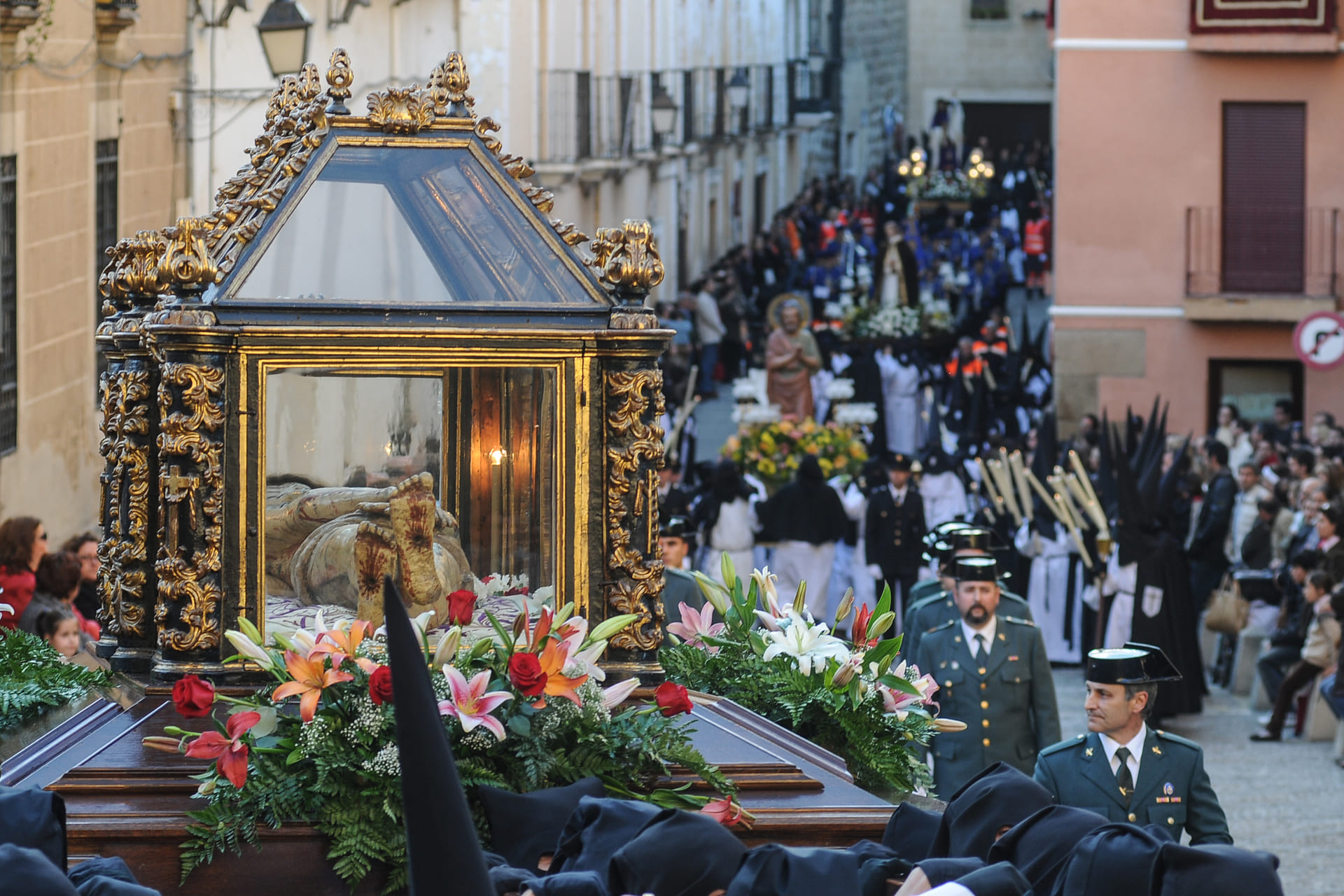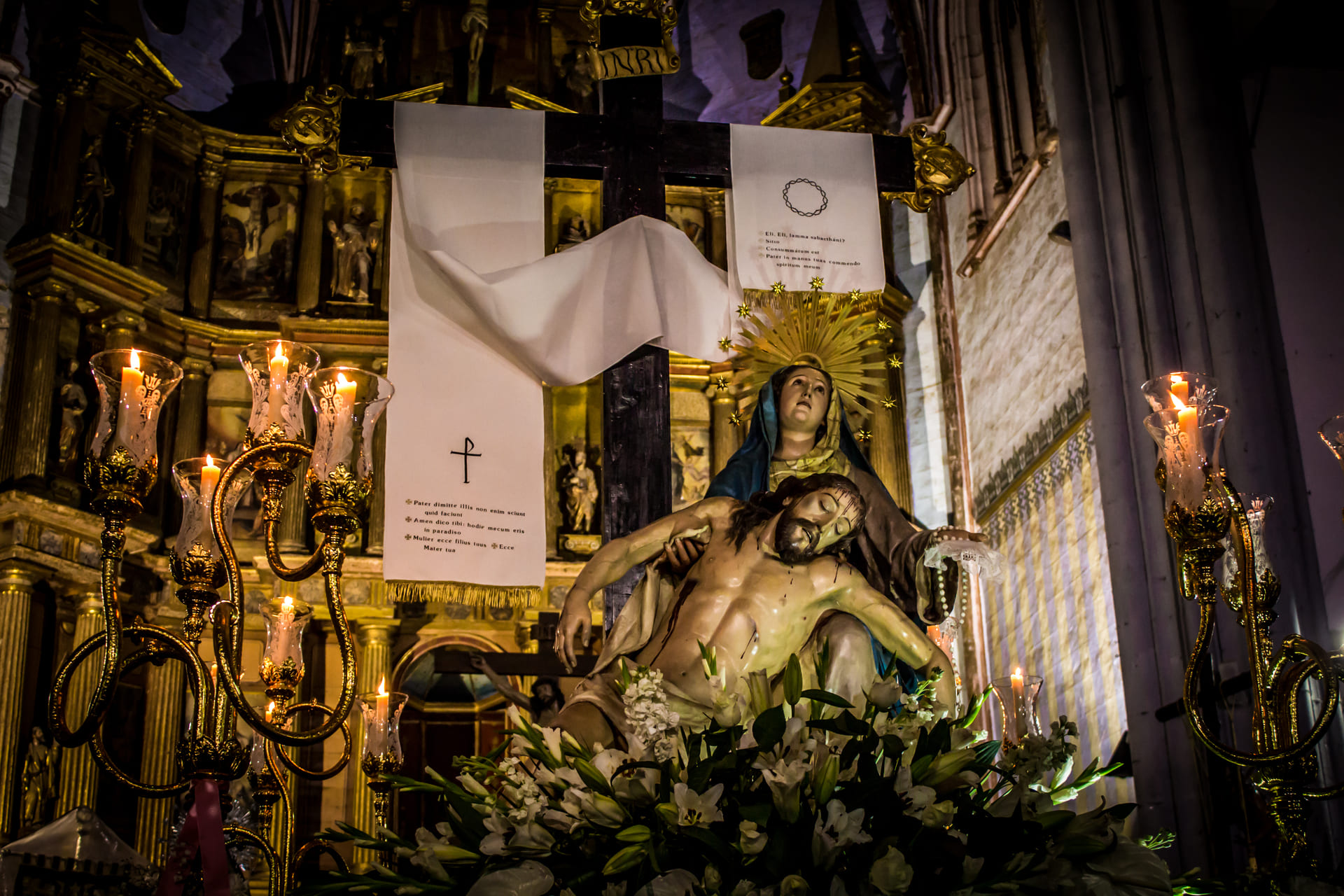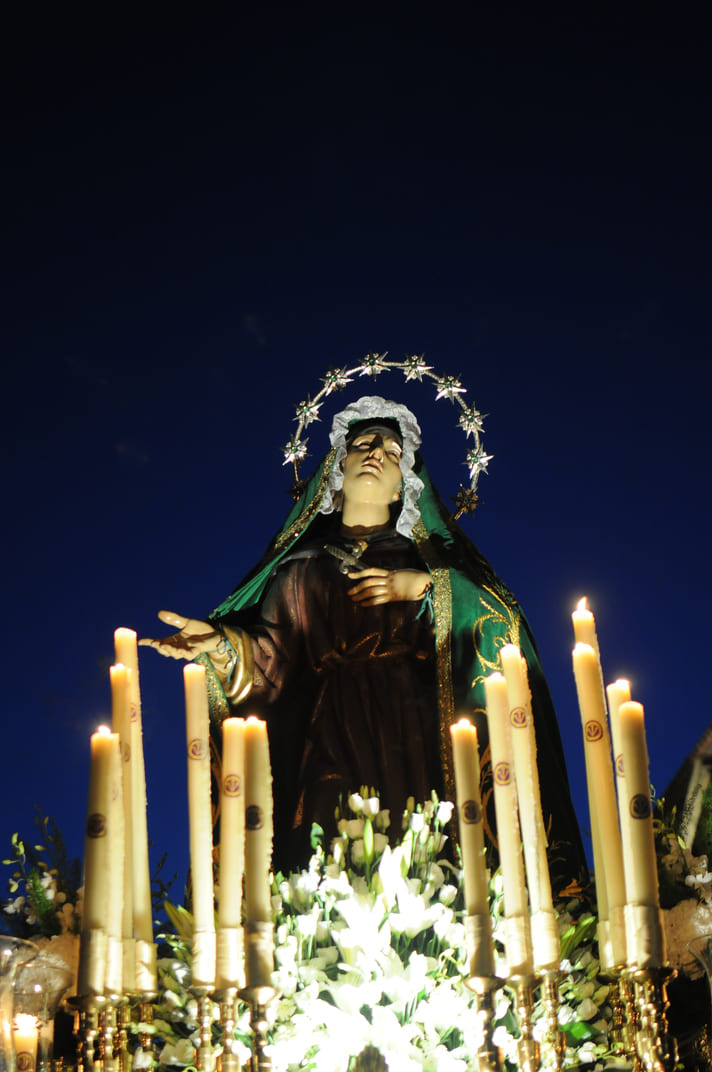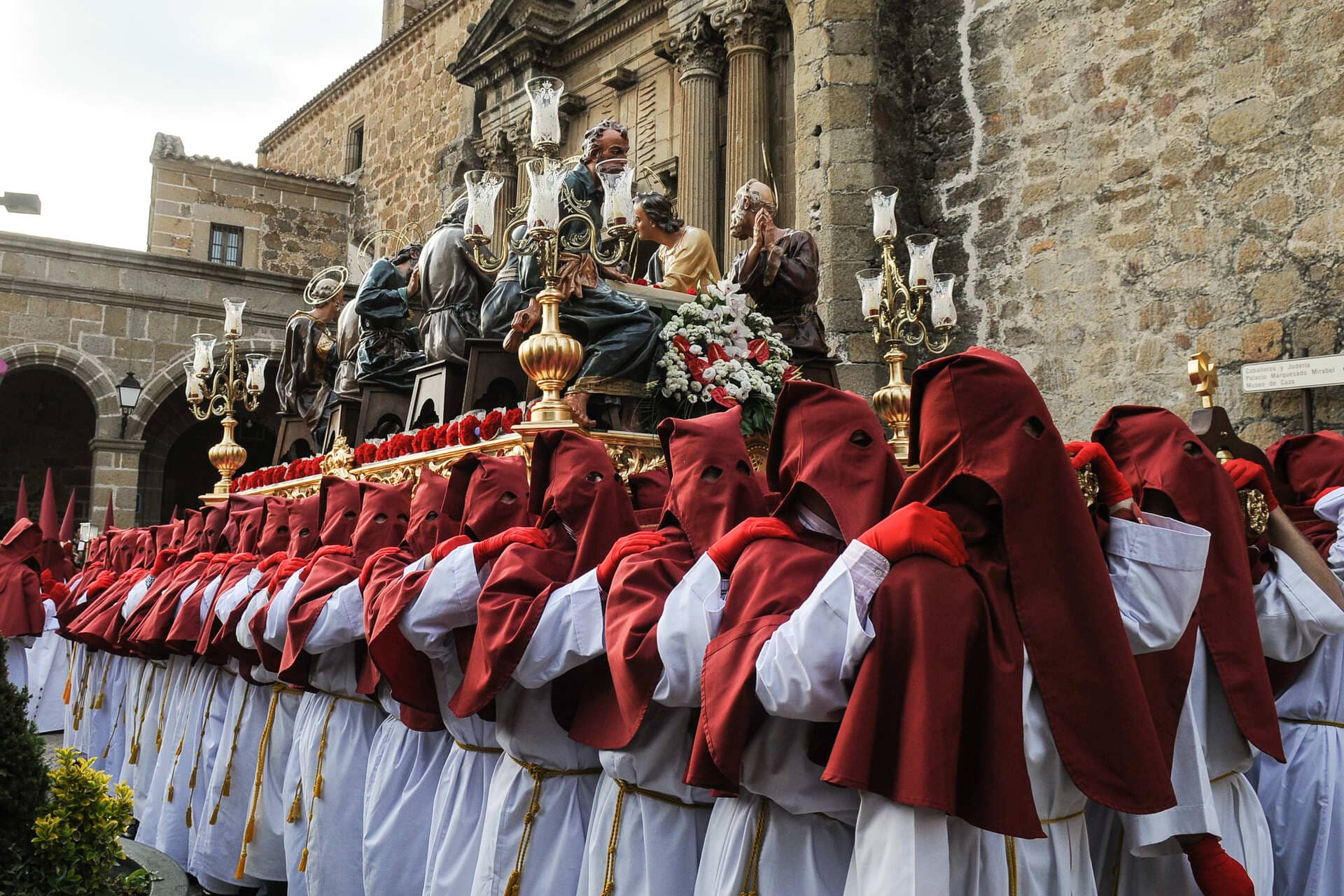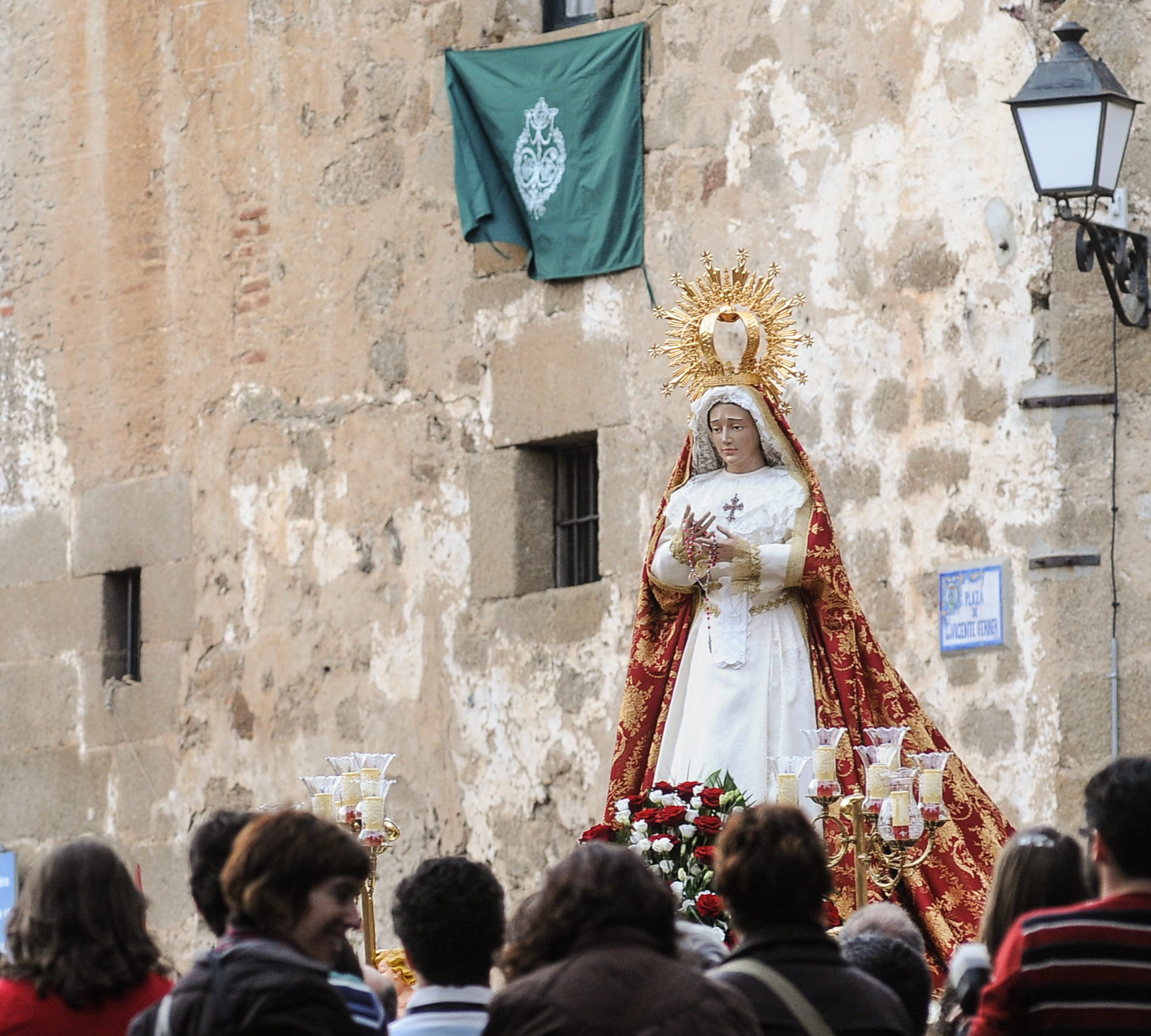Holy week of Plasencia
Festival of Regional Tourist Interest
With more than 800 years of documented history, Holy Week in Plasencia is one of the oldest in Extremadura. During this celebration, faith, art and tradition come together in solemn processions which traverse through the city’s historic district, highlighting its rich heritage and spirituality. On this page you will discover its history, brotherhoods, gastronomic traditions and the charm of Plasencia as a unique setting for this festivity.
History, faith and tradition
Over the centuries, the processions have evolved, adapting to the different eras and combining the Castilian and Andalusian traditions into a unique, hybrid Holy Week, of incalculable cultural and artistic value.
Since the Middle Ages, Holy Week in Plasencia has been a manifestation of faith and tradition. The oldest brotherhoods date back to the 13th century and their modern organisation was set up in the early 20th century. Its roots are intertwined to the spirituality and social commitment of religious orders.
+800
Years of history
Did you know that?...
The Holy Week of Plasencia is the oldest in Extremadura, with 800 years of history. The city has 11 churches and numerous convents, providing a unique setting for its more than 12 processions in a week. Furthermore, its gastronomy stands out with exclusive dishes such as the Bollo de Patata Frito (Fried Potato Biscuit), a typical sweet unique to Plasencia.
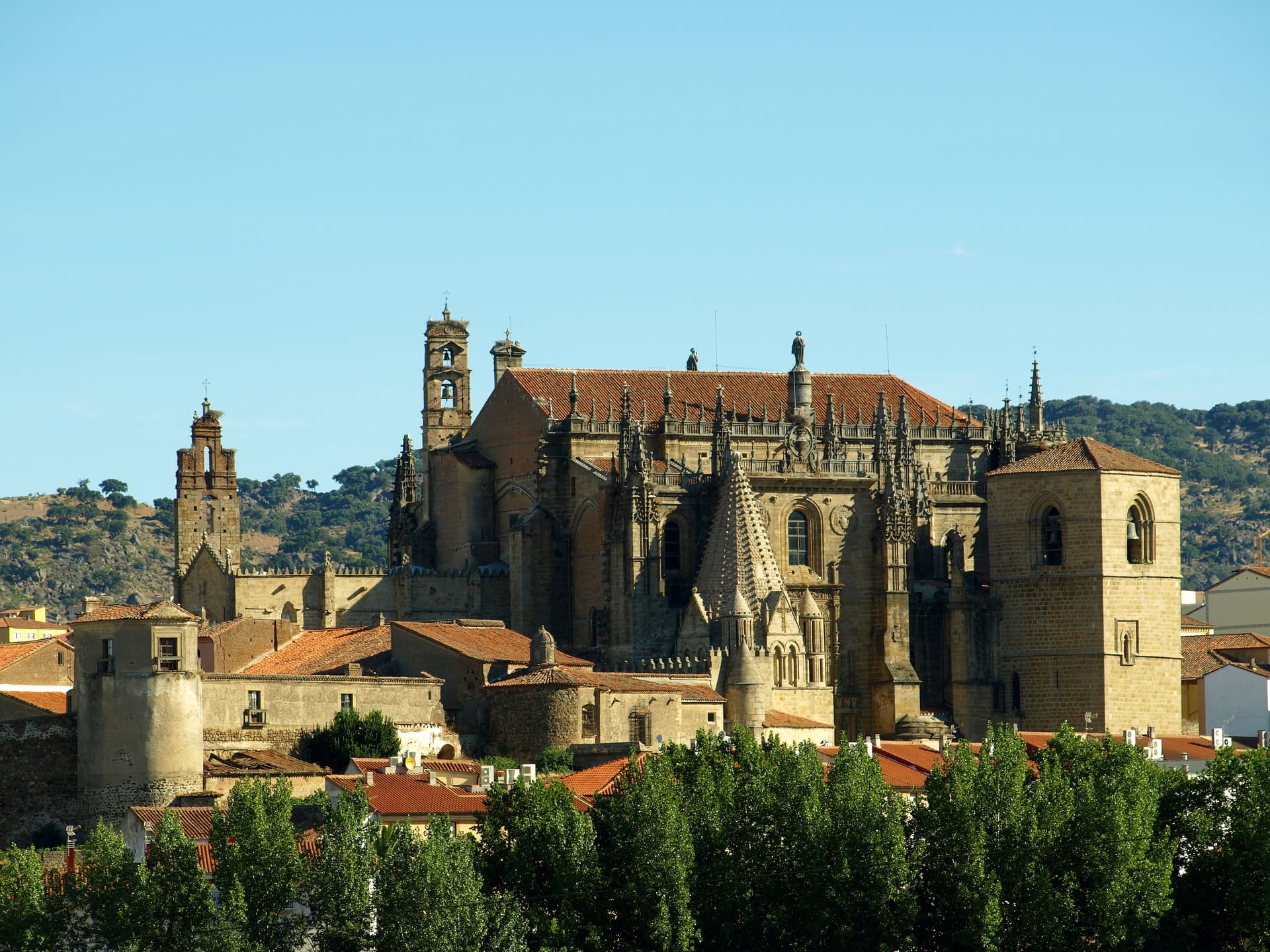
Plasencia:
Exceptional setting
Plasencia’s historic district is an exceptional setting for enjoying Holy Week. The atmosphere of contemplation and devotion of the processions becomes even more majestic among the narrow streets of the centre, surrounded by palatial houses, churches and convents. The monumental character of Plasencia enhances its Holy Week.
Notable locations to see during Holy Week
Plaza de la Catedral
Plaza de San Nicolás
Plaza Mayor
Plaza de San Vicente Ferrer
Calle San Esteban
Did you know that?...
Plasencia’s Holy Week has 12 brotherhoods which keep a centuries-old tradition alive. Some of these brotherhoods, such as the Brotherhood of the True Cross, have roots dating back to the 13th century, while others have only recently been created to enrich the processions. Together, these brotherhoods organise the majestic parades which every year fill the city with devotion, history and heritage.
The Gastronomy of Holy Week
Typical of Lent and Easter, the gastronomy is one of the attractions to enjoy during these days. Restaurants, shops and bars offer traditional dishes during Holy Week which cannot be sampled at other times of the year. These recipes embody the culinary tradition and the flavour of tradition; made with humble products typical of the area, creating savoury and sweet dishes which are truly mouthwatering delicacies to enjoy during these days.
Typical dishes
Spanish Style French Toast
A traditional Lent and Easter dessert in Extremadura, made with bread soaked in milk, egg and sugar, then fried until golden and crispy. Exceedingly popular at this time of year, following the tradition of using leftover bread and has become a staple of Plasencia’s gastronomy, found in homes, patisseries and restaurants as a typical dessert to enjoy during Holy Week.
Marinated Potatoes
This recipe of fried and marinated potatoes, eaten cold, is one of the most traditional dishes which cannot be missing from any home in Plascencia during Lent and Holy Week. This humble dish, which may also include cod, has now become a delicacy that can be sampled in many restaurants and bars throughout the city.
Fried Potato Biscuit
This exquisite sweet is typical and unique to Plasencia. Made by a single family who jealously guards the original recipe, there isn’t a single person in Plasencia who isn’t wild about this sweet. Its production was closely related to Holy Week, however, due to its success, it can now be found all year-round. It is still sold by street vendors, as it was decades ago, although it is quite common to find a stall in the traditional Tuesday market or at the natural pool in the island’s park during the summer.
Marinated Fish Stew
Much like the previous dish, this dish included a marinated stew, a stew widely used in medieval times as it could easily preserve the dish for several days. It is a different and simple way to taste the fish found in the local rivers of the area. In Plasencia, specifically the fish is from the Jerte River which runs through the city. This dish is traditionally one of the mainstays of the Extremaduran diet. This fish stew is simply grilled or braised fish served together with a vegetable “picadillo” hash and vinegar.
Lent stew
A typical Lent dish consisting of a chickpea stew, with spinach and cod which can be sampled in many homes and restaurants in the city.
Dumplings
Traditional dessert typical of Extremadura closely related to Holy Week. Its origin comes from a strategy of using the leftover stale bread, which is soaked in milk, battered and cooked in a milk, sugar, cinnamon and lemon mixture.

